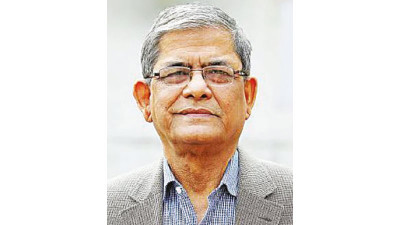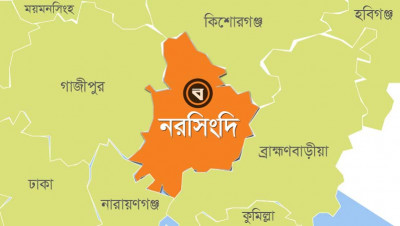 Photo courtesy: The writer
Photo courtesy: The writer How much is the foreign reserve? How much has come in or gone out? It has been a regular headline and topic of discussion in the country. $25 billion, $20 billion or $15 billion? All the explanations around the number have acceptability from different segments of pundits. In a simplified manner, the difference between inflow and outflow determines the surplus and deficit. Cumulative surpluses increase the reserve. Over the past years, a lot has been explained on import, export, remittance, foreign direct investment and loan. However, it is surprising to see no such discussion on outward remittance (outflow of foreign currency) has been presented. One of the key reasons for this is absence of clear information on outward flow. While going through Bangladesh Bank and BIDA (Bangladesh Investment Development Authority) resources no such record was found….hence it is difficult to determine the impact of outward and the trend for the last couple of years. There has not been a formal request or write up asking for such data as well. Going back to the early and mid 2000s, such questions were raised, but remained unanswered from respective authorities. And, as a result, it seems researchers have accepted that as a country we will not be able to know the correct number in this regard.
The outflow of dollars, when through formal channel, is carried out by our banks with authorized dealer license. These are done through travel and miscellaneous (T/M) forms and reported to the central bank under different codes. Each purpose has a separate code. So, it is not difficult to determine how much outflow has taken place yearly and for which purpose. However, no such report is shared Bangladesh Bank on its website despite receiving the outward report from schedule banks regularly.
The major outflow might come from the outward remittance/payment sent by expatriates to their respective home countries. Couple of days ago, BIDA organized a meeting where the actual number of foreign workers in the country was a major topic of discussion. The official number of 100,000 foreigners living in the country that was presented at the meeting is widely believed to be lower than the actual number. It is widely speculated that the number might be more than half a million. BIDA’s annual report only provides the number of work permits issued by them for a year. There is no cumulative figure or information on how many have returned after the completion of their tenure in Bangladesh.
Time has come to look into this issue seriously. The first one to understand the impact of outflow of dollars for assessment. This is a time when the country has taken a contractionary monetary policy with a view to restricting import or reducing outflow of foreign currency. Outward remittance, whether increasing or not, can only be determined if there is data for analysis.
Furthermore, those working without proper approval/ permit might also be sending money through informal channel, which was also discussed in the BIDA-organized meeting. The regulation of hiring foreigners needs serious consideration for couple of reasons.
As a country, we are rightfully optimistic regarding our higher youth percentage to total population. As a nation we have been successful in many fields (IT, banking, manufacturing, teaching, research, medicine etc) both at home and abroad. The contribution of women and youth has been one of the keys to our success, which has been resilient, vibrant and brave, and helped grow our economy every year for last 50 years with no degrowth history. But, in recent times there have been media reports stating that unemployment in the younger people is getting higher, which is regrettable. While the unemployment rate hovers around 4% as per WB report (less then India and Pakistan), it is unfortunate to see that 41% of the graduates are not involved in education/training. Economic intelligence report also indicated the same, estimating the unemployment among youth to be around 47%.
The hiring of a foreigner has a multiple affect. While it can be argued that the expertise provided by foreigners at the top management can benefit the local companies and to some extent it has been the case. However, the package offered to mid-level foreign workers is significantly higher than same level local staff. Furthermore, it has been observed that the expats salary is denominated in foreign currency. Hence, in a taka depreciation scenario, they also get (in some of the companies) the benefit of a high exchange rate while receiving their salary in taka along with the applicable yearly increment or inflation adjustment. On the other hand, the local staff only receives the inflation adjustment for the same job. So, the expenses of a company with multiple expats automatically increase. Just putting into context, taka had an exchange rate of around 92 in June, 2022 and now it is hovering around 110. Without even increasing a single taka in salary, a company would have to pay around 30% more to couple of staffs due to the contract in foreign currency.
The other aspect of keeping foreigners at the mid-level is that a company also is depriving of local talents or potential to grow further. This also hinders creating new jobs. Due to lack of oversight and monitoring, many foreigners are continuing in the same role over the years. Hypothetically, just imagine a certain program is being rolled out (now you can roll out it through internet platforms) and an expat comes in. It has been heard even after 3 to 4 years that position is continuing after successful implementation. Whereas it would have been ideal to have the program run by home grown people.
In many local talk shows, seminars and roundtable, we tout our workforce and the young demographics to total population. It is widely accepted throughout the world that having a young work force benefits a country to increase their GDP size. Globally, we also see concerns from China and Japan regarding their youth workforce numbers. Bangladesh in nature is a factory; we import/grow raw material then assemble/manufacture and sell at home and abroad. This is our model to a large extent. And, our success in RMG, food, pharmaceutical and agriculture has been widely dependent on youth workforce. We already have more than 28% youth representation in our total workforce. They are not properly recognized and paid. Some of our local companies have shown that we have competed successfully in the international arena given proper guidance, support and encouragement. However, as a nation we need all our sectors to grow and for that it is imperative that jobs that are being created are provided to locals. Since FDI is important and any investor would like their nominated representatives to be employed at their offices and one permanent position can be kept for them. Given how improved current communication system has been for last 10 years, one does not need to be physically present for daily activity. This step would help us grow further.
Another interim step can be considered. The foreign employment in Bangladesh, at least for next few years, (while we improve our foreign currency reserve and condition) should be short term or if required the head office should bear the cost of the expatriates here. That way the local company can grow and be less expensive. At the same time, the morale of the local employees would remain positive.
Building local workforce and up-skilling professionals has always been one of the key elements of sustainable growth of the country. This also opens doors to increase inward remittance from higher pay jobs abroad. As we approach the timeline to graduate from LDC it is paramount that policies to increase youth work force and reduce dependence on expats should be taken. Our vision to grow economically can only sustain through policies that protect our interest and enhance our capacity as a nation.







